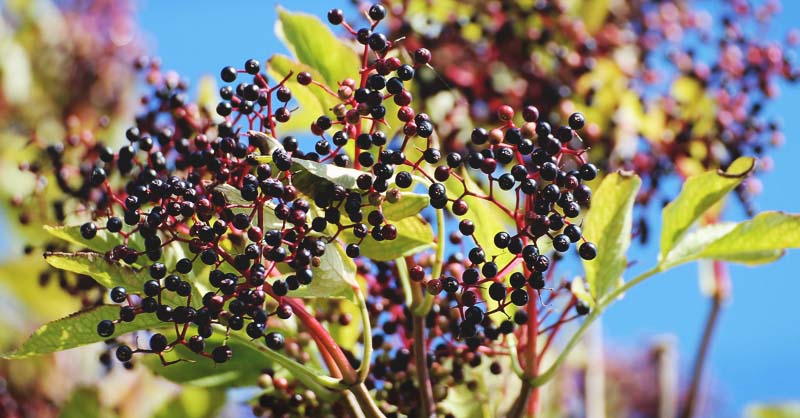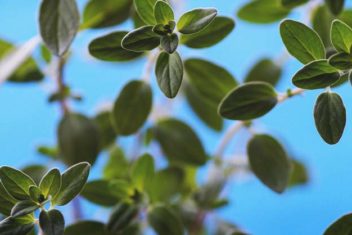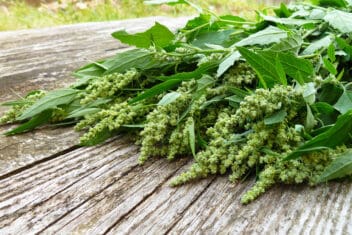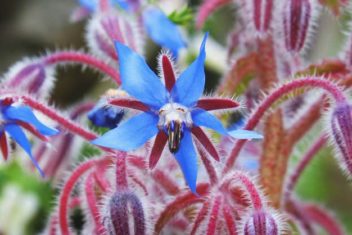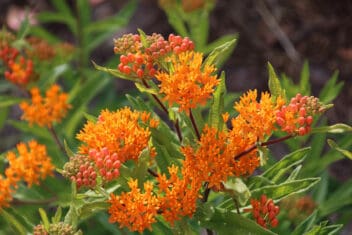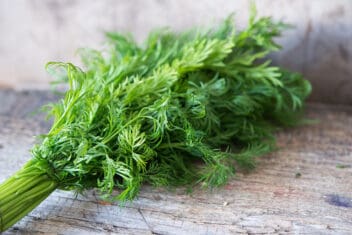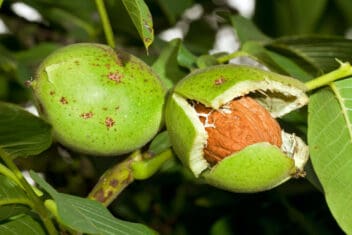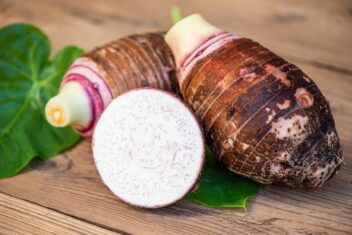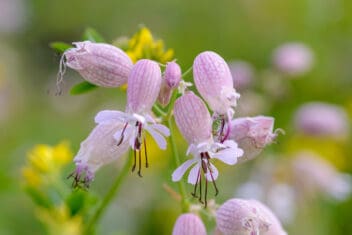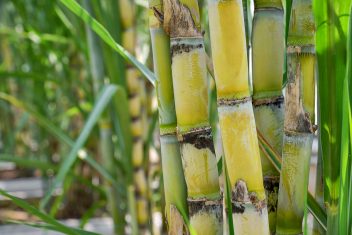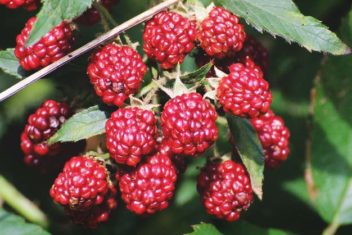Elderberries are multi-stemmed shrubs that grow wild in many regions of the United States. Once ignored in favor of more popular berries, growing elderberries is making a comeback and you’ll find them all over the country in jams, pies, and wine. They’re also an in-demand medicinal plant, and they have more vitamin C than oranges.
I have fond memories of picking wild elderberries with my grandmother to make them into scrumptious pies. I especially remember puckering my mouth when I couldn’t resist sampling one of the tart fruits as we plucked them.
Both the sweet smelling flowers and the fruit are edible. The blossoms are perfect in southern fritters and also make delightful champagne. Traditionally, elderberries are not eaten fresh because of the astringent flavor, but new cultivars are producing berries that have a sweeter taste.
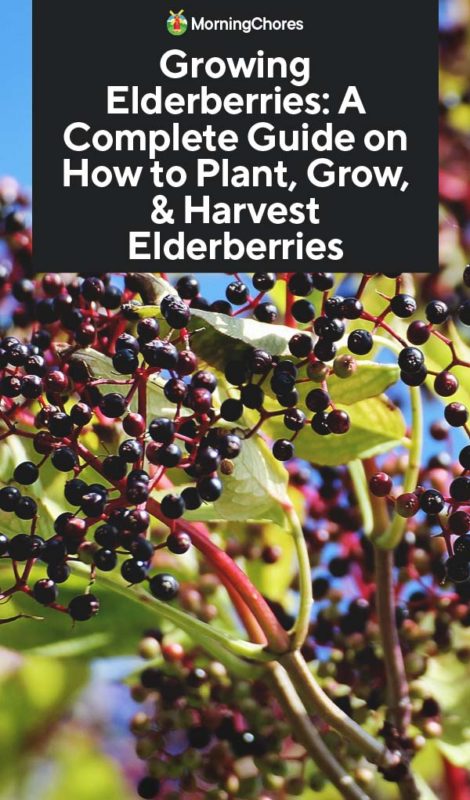
Elderberry Varieties
The American elderberry (Sambucus nigra subsp. Canadensis) produces small fruits that grow in clusters similar to grapes.
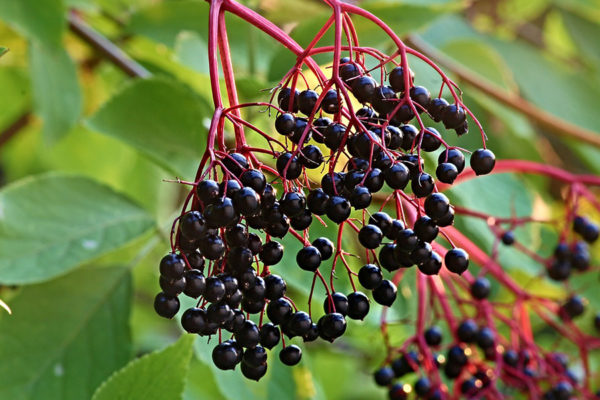
There is also a European Elderberry (Sambucus nigra) which is more ornamental and does not produce as much fruit, nor is it as tasty.
Use caution when choosing elderberries, especially if you are harvesting from the wild. There is a related plant, the red elderberry (Sambucus racemosa), that looks like other elderberries. It produces bright red fruits that are poisonous to humans.
Varieties
- Adams – Adams is the famous “pie” elderberry and produces medium, juicy, purple fruits that ripen in August. They grow eight feet tall and do well in wet areas. It’s a sturdy bush and is not prone to collapsing under the weight of the berries, which are semi-sweet and can be enjoyed fresh. Johns is the perfect cross-pollinator, although Adams will cross with Nova and York as well.
- Johns – Johns is a tall variety which gets up to 12 feet. The top branches tend to get heavy with fruit and bend, so use tree supports. It’s a vigorous producer of large, dark tart berries that are delicious in jam and jellies. It’s cold hardy and does well in northern climates. I have both Johns and Adams growing at my farm, and I harvest the berries at the same time and don’t separate them out by species because I love the sweet and tart mix.
- Nova and York – Nova and York are both more compact and get approximately six feet tall. They cross-pollinate with each other. Some nurseries promote Nova as being self-fruitful, but it doesn’t produce as well on its own. York produces large berries that ripen a couple weeks later than other varieties.
- Bob Gordon – Bob Gordon is a newer variety developed by the University of Missouri, a leader in elderberry production. It has large clusters of large, dark purple berries. It’s a favorite among winemakers thanks to its high sugar content.
Planting Elderberries
When growing elderberries, keep in mind that they cross-pollinate. You will need to have at least two different varieties within 50 feet of each other.
Sun and Temperature Requirements
Elderberries prefer a sunny location but will adapt to part shade. They’re hardy throughout the United States in USDA zones 3 to 10.
Soil Requirements
Elderberries are not picky, but they prefer a slightly acidic soil rich in compost. Your optimum soil pH should be between 5.5-6.5. Ideally, they should have a loamy, sandy, well-drained site. Add some manure or compost before planting if your earth is lacking.
The plants do well in moist areas and can tolerate having wet feet. I grow mine by a fence in an area that holds water.
When to Plant
The best way to go about growing elderberries is to purchase named plants from a reputable nursery. This way you know what cultivar you’re planting and can pick varieties that readily cross-pollinate.
Plant in the spring when all danger of frost has passed. Dig a generous hole and mix the native soil with equal parts of well-rotted compost. Plant two inches deeper than the nursery container.
Spacing
Elderberries grow between 6-12 feet tall, depending on the variety, and just as wide. Place plants 6-10 feet apart.
Elderberry Cuttings
Elderberries can be grown from cuttings, although it’s more challenging. Gather softwood cuttings in early spring when it’s still green and flexible.
Cut softwood into six-inch pieces and remove the leaves from the lower two inches. Place them in a jar filled with two inches of water in a warm, sunny location. Replace the water as needed.
Roots will appear in 6-8 weeks. Give them time to become established before transplanting into the garden.
You can also place cuttings in a mix of well-watered peat and sand. This helps the plant grow sturdier roots, but it’s more difficult to monitor root growth.
Care of Your Elderberry Plants
Fertilizing
Elderberries are perennials and will start producing when they are 2-3 years old. They need fertile soil, so fertilize your elderberries every spring with compost. Place two inches of compost in a ring around the plant, keeping away from the trunk.
I also give my elderberries a boost of fish emulsion at the time of fruit set to encourage berries. I spray the leaves and stems of the plant as well as the soil around them. Elderberries have shallow roots and will soak up the fish emulsion.
Watering
Growing elderberries need regular water. The plants have shallow roots and need about an inch or two per week. Water at the soil level to avoid fungus and mold from infecting your plants.
Pruning
Elderberries don’t need to be pruned until year three. Prune out dead or diseased branches in early spring, and remove branches that are older than four years old because they are less productive. Fruit grows on both new and old wood, but the best production occurs on one- and two-year canes. Pruning out older canes will encourage new cane growth.
Elderberries will produce new canes and suckers, similar to raspberries, so they make a nice hedgerow or living fence. These new canes will produce fruit in the coming years so only remove them if they are becoming invasive.
Mulching
Mulch with straw or bark to help reduce weeds and keep in moisture during the summer.
Problems and Solutions to Growing Elderberries
Growing elderberries is easier to grow than some fruits because they’re low maintenance and have relatively few diseases or pest problems.
Birds
Use bird netting tied securely to the base of the bush to prevent birds from stealing your fruit.
Fungus
Elderberries can get fungal diseases such as powdery mildew, leaf spot or fungal canker. Prune and burn infected stems.
I have elderberries planted along the fence outside my orchard. If I’m having an issue with something like powdery mildew on one tree, I will spray all the trees around it stop it from spreading. Serenade or neem oil is perfect for this.
Cane Borer
Wilting cane tips and lumpy canes with small exit holes are a sure sign that you have cane borers. Left unchecked, this pest can kill an entire plant. If you catch it early, cut off the wilting cane tips below the damage. Destroy pruned canes.
Thread Blight
Thread blight is a fungus that attacks growing elderberries. The plant’s leaves will curl, wilt and turn brown. You’ll also see a white, thread-like fiber on canes. Prune out infected twigs and keep plants well-spaced to improve air circulation.
Verticillium Wilt
This soil-borne disease is the dreaded nemesis of many gardeners. If you catch it early, you can prune off infected branches and destroy them. If the plant is too infested, you’ll need to remove it, along with a foot of the soil surrounding the plant. Add fresh soil and solarize your earth.
Thrips
These tiny insects suck sap from your plant and can cause stunted growth and malformed fruit. They also transmit diseases. Use neem oil to get them under control.
Elderberry Companions
Elderberries can be used much like mulberries in the home orchard. Both of these fruits are attractive to birds, so they’ll help keep birds away from your other fruits.
Best Companions:
- Currants
- White Pine
- Winterberry
- Gooseberry
- Phlox
- Bee Balm
- Cherry
Worst Companions:
- Tomato
Harvesting and Storing
Elderberries produce in late summer, during August and September. They yield 10-15 pounds of dark purple fruit on a mature plant.
It’s easiest to snip the cluster of berries from the plant and then remove individual fruits. Refrigerate after harvesting if you won’t be processing them immediately. You can also freeze them as freezing does not damage the fruit.
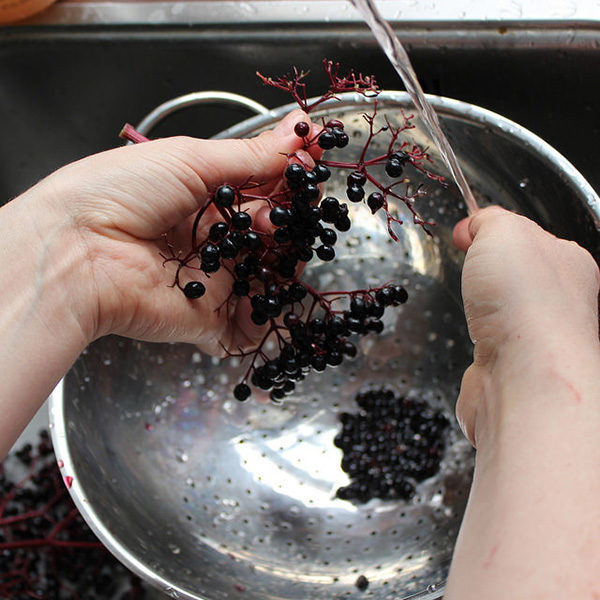
The flowers are delicious dipped in batter and fried up as fritters. Keep in mind that harvesting the flowers reduces berry production.
You can also dry elderberries in your oven or dehydrator. The dried berries make a delightful candy bar in a recipe developed by famous botanist Euell Gibbons. Make them using the directions below.
Ingredients
- One and one-half cups of dried elderberries
- Five tablespoons confectioner sugar
- One pint or 16-ounce jar creamy peanut butter
- One 15-ounce can condensed milk
- Two tablespoons vanilla
Method
- In a large bowl mix the peanut butter and sugar.
- Add to that the milk and vanilla.
- Mix together until candy can be formed into logs.
- Add elderberries and mix in gently.
- Form log-shaped bars in whatever size you choose.
- Wrap logs in aluminum foil.
- Freeze until ready to use.
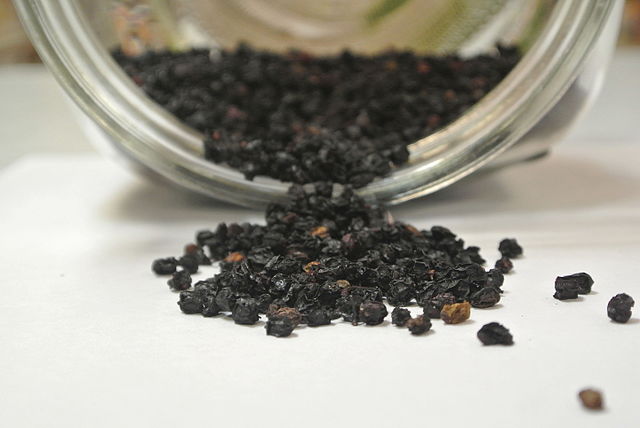
Medicinal Uses
Elderberry is a well known medicinal plant that contains vitamins A, B, and C. Elderberries have traditionally been used to treat illnesses, such as respiratory problems, colds, and flu. Today there are many commercial medicines that use elderberry.
Hippocrates is said to have referred to elderberries as his “medicine chest.” Science has proven that they have high antioxidant potential which protects our bodies from free radicals.
If you’ve never tried growing elderberries before, make this your year. If you have, let us know what you like best about them in the comments.

